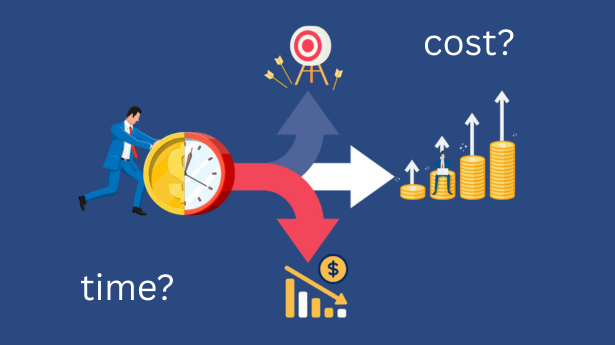If you are serious about property investing, using a long term property investment tool can be a game-changer from day one. In this article we explain how the best investors build a 10-year strategy using forecasting tools and data-driven models, and we show you how you can apply this method to your own portfolio. The thesis is clear: by adopting a structured tool-based forecasting approach your property investment decisions become more deliberate, measurable and aligned with long-term goals.
What is a long term property investment tool and why top investors use it
A long term property investment tool is software or a digital model designed to project key metrics (such as rental income, capital growth, cash flow, tax impact and exit strategy) over a 10-year horizon. Serious investors don’t rely on gut-feel or one-year forecasts. They understand that building wealth through property is a marathon, not a sprint.
By using forecasting software for investors you gain clarity on how various decisions (e.g., property type, suburb, financing strategy, renovation) affect outcomes. It helps you test scenarios (“what if I choose suburb A versus suburb B?”, “what if I refinance in year 5?”, “what if rental growth slows by 2 % instead of 4 %?”) and align your plan with long-term objectives.
Using a tool gives you a repeatable process rather than ad-hoc guesswork. This introduces discipline, which the most successful property-investment players apply consistently.
How to evaluate property forecasting software for investors (with stats/data)
When selecting the right tool you want to compare key attributes: accuracy of assumptions, flexibility of scenarios, ease of use, reporting clarity, and long-term exportability (i.e., you need it for your 10-year plan).
Some specific checklist items:
- Does the tool allow you to model 10-year plus horizons rather than only 3–5 years?
- Can you adjust growth rates (capital growth, rent growth, expense escalation) easily?
- Are you able to simulate refinancing, tax changes, exit strategy and net equity in year 10?
- Does the tool maintain audit-trail of assumptions so you can revisit later?
- Does it provide clear visuals or graphs that you can show stakeholders (partners, lenders) to back up your strategy?
When you compare options, you’ll often find that simpler calculators may cover only short-term projections and lack flexibility. Choosing a tool built for long-term strategy gives a material advantage.
Common questions and concerns about using a 10-year property strategy tool
Q 1: Isn’t 10-year forecasting too uncertain?
Yes, forecasts are inherently uncertain. But the value lies not in knowing the precise number after 10 years, but in understanding the trends, sensitivities, and key decision-points. If you only look 1–2 years ahead you miss the “what if” of long-term property investing (e.g., market cycles, tax changes, refinancing).
Q 2: What if my assumptions are wrong (e.g., growth slower than expected)?
Good tools allow you to run sensitivity analysis. For example, test a lower growth scenario (say 2 % instead of 4 %) and see how it affects your net equity or cashflow in year 10. The best investors build flexibility into their plan and know which levers they can adjust.
Q 3: Is this financial advice?
No. Using a forecasting tool is educational: you are building your own scenario. Under Australian regulation every investor must seek personalised financial advice if needed. What we provide here is general information only.
Q 4: Do I need to be a tech-expert to use these tools?
Not necessarily. Many tools are user-friendly with templates and default assumptions. The key is to understand what inputs are being used (growth rates, vacancy, expenses) and adjust them to your circumstances.
Step-by-step process to build your decade-long property plan using the tool
- Define your investment goal: For example, achieve $X net equity in 10 years, or hold 3 properties generating $Y in rental income each.
- Choose your property profile: Decide on location, property type (unit, house), entry price, borrowing strategy, deposit and loan terms.
- Input base assumptions into your forecasting tool: e.g., annual rent growth = 3 %, capital growth = 4 % for first five years reducing to 2-3 % years 6-10, vacancy rate = 5 %, rent escalation vs expenses, refinancing in year 7.
- Run scenario analysis: Use the tool to simulate alternate scenarios; slower growth, higher expenses, earlier exit. View the graphs and key numbers (cashflow year 1, cumulative cashflow, net equity at year 10, IRR, tax impact).
- Review outputs and identify decision-points: For example you may find that your net equity target in year 10 is only achievable if growth averages 4.5 %; this signals you either choose a higher growth location or accept a longer hold.
- Document your plan and update it annually: Use the tool each year to compare actual outcomes vs assumptions and adjust your strategy accordingly.
Tips to maximise your forecasting tool’s impact and avoid mistakes
- Use conservative assumptions rather than overly optimistic ones (avoid bias).
- Ensure your data is Australia-specific (capital growth, rental yield, tax settings) so your inputs reflect the local market.
- Save versions of your model so you can revisit what you assumed and how the market changed.
- Use the tool as part of your broader strategy, not a replacement for due diligence (property inspections, financing, market research).
- Consider the tool’s output as a framework rather than a guarantee. Markets change, but a plan rooted in data gives you better control.
- Build backlinks (internal to your site) from other content pieces such as case studies, market updates, tool reviews and external authoritative resources (e.g., industry reports) to boost credibility and SEO.
Conclusion
In summary, adopting a long term property investment tool empowers you to build a clear, measurable 10-year property strategy rather than relying on guesswork. We walked through what the tool is, how to evaluate it, addressed common concerns, gave a step-by-step process and shared tips to maximise its impact. Now is the time to act: pick a tool, input your assumptions, simulate your decade ahead, and refine your plan. BOOK A CALL with us and our experts will help you map out your 10-year target and schedule a review of the assumptions monthly. Your future self will thank you.






